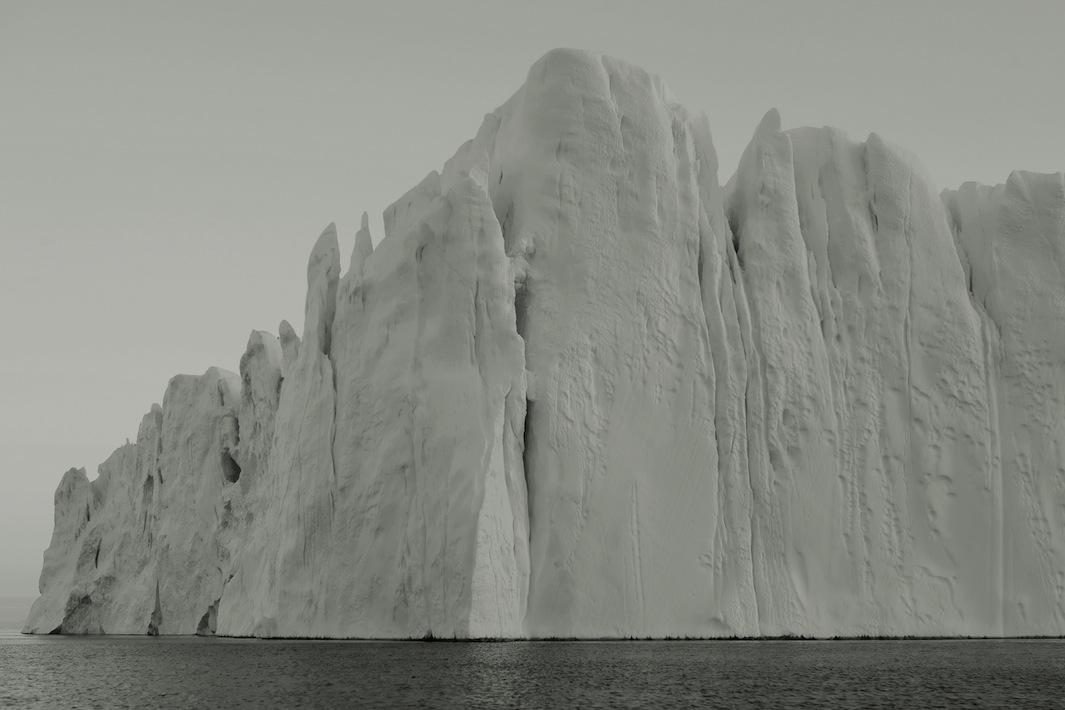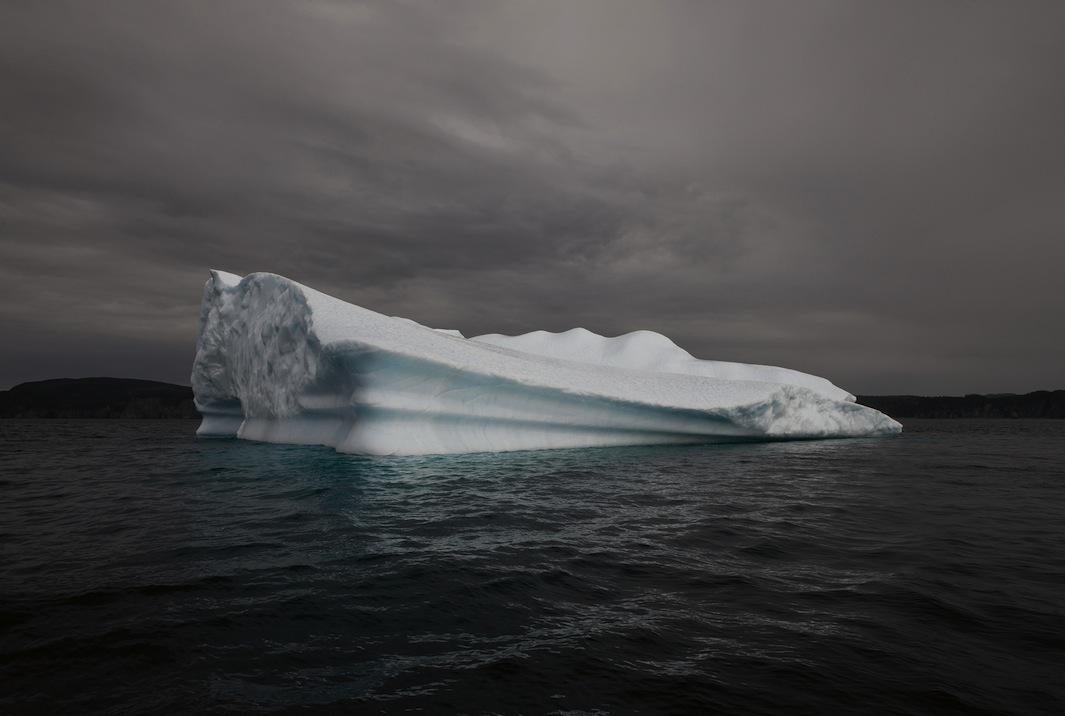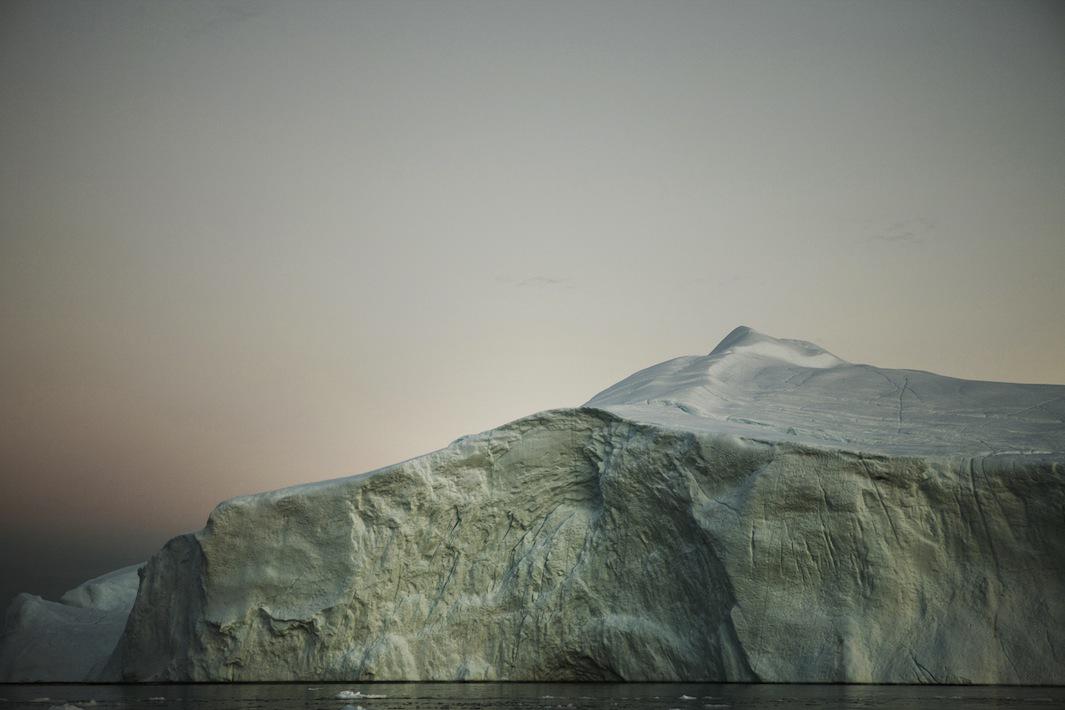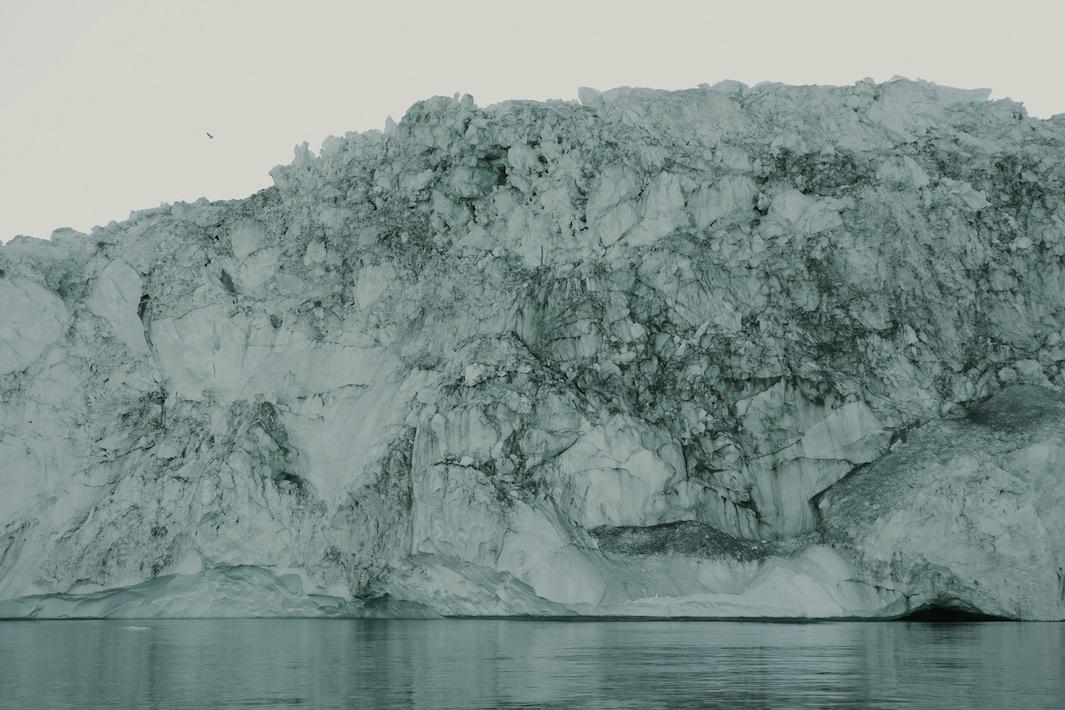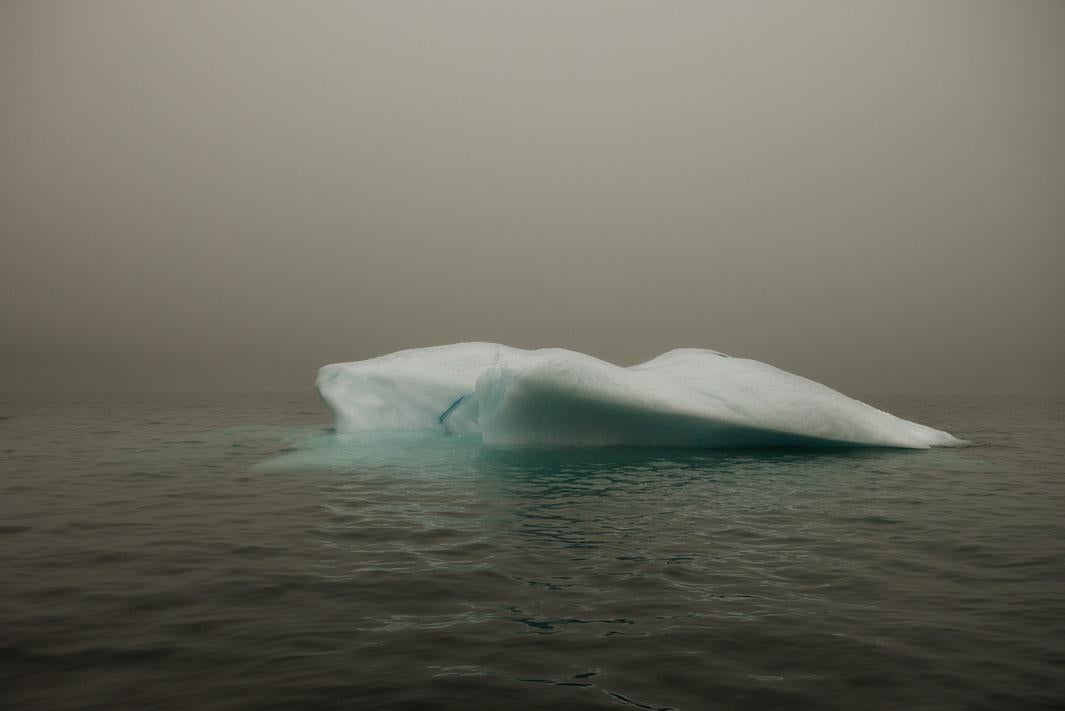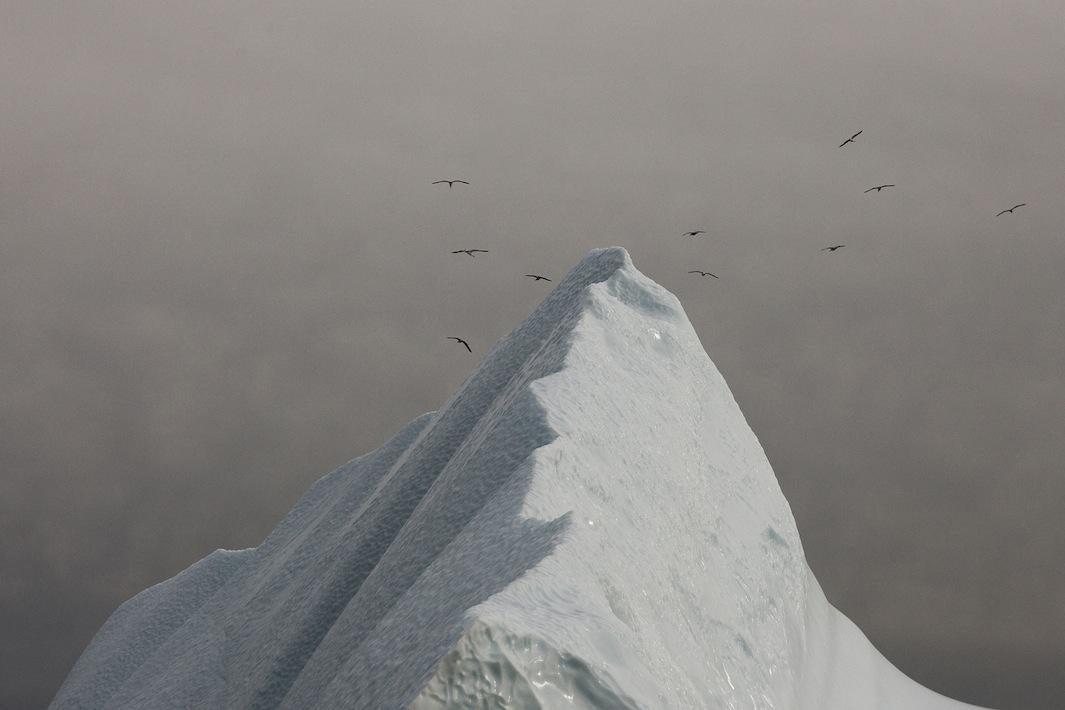When Simon Harsent was 11 years old, he painted a picture of the Titanic crashing into an iceberg. He doesn’t remember why he did it, but he knows that it was the start of his fascination with painting, which later evolved into a love of photography. Looking back on it later in life, Harsent became interested in how major events—the sinking of a ship, for instance, or the beginning of his photography career—are determined by a series of small incidents. It’s an idea he explores in his book, Melt: Portrait of an Iceberg, which shows how icebergs transform throughout their lifetime. “I often think back to the moment when I decided to paint the iceberg, and the path that that decision took me down. I have no doubt that the journey I’m on now is linked to this one definitive moment in my life. The body of work that constitutes ‘Melt’ could never have come into being any other way,” Harsent wrote in a statement.
In the course of Harsent’s research on the Titanic, he discovered that the iceberg with which the ship collided had “almost certainly” traveled down Iceberg Alley, a zone from Greenland to Newfoundland and Labrador, Canada, through which icebergs travel after breaking from the ice wall. In 2008, Harsent visited St. John’s in Newfoundland and Labrador to photograph icebergs at the end of that journey, after they’d been thoroughly battered and diminished by the elements. Later, he traveled to Greenland to see the icebergs in their original, massive state, just as they entered Greenland’s Disco Bay from the Ilulissat Icefjord. “Seeing them first overpowering in grandeur and then, later, about to be absorbed back into the flux from which they came, is both beautiful and humbling: a metamorphosis that endows them with a life-span, each with it’s own personality, each with its own story,” Harsent wrote.

Simon Harsent

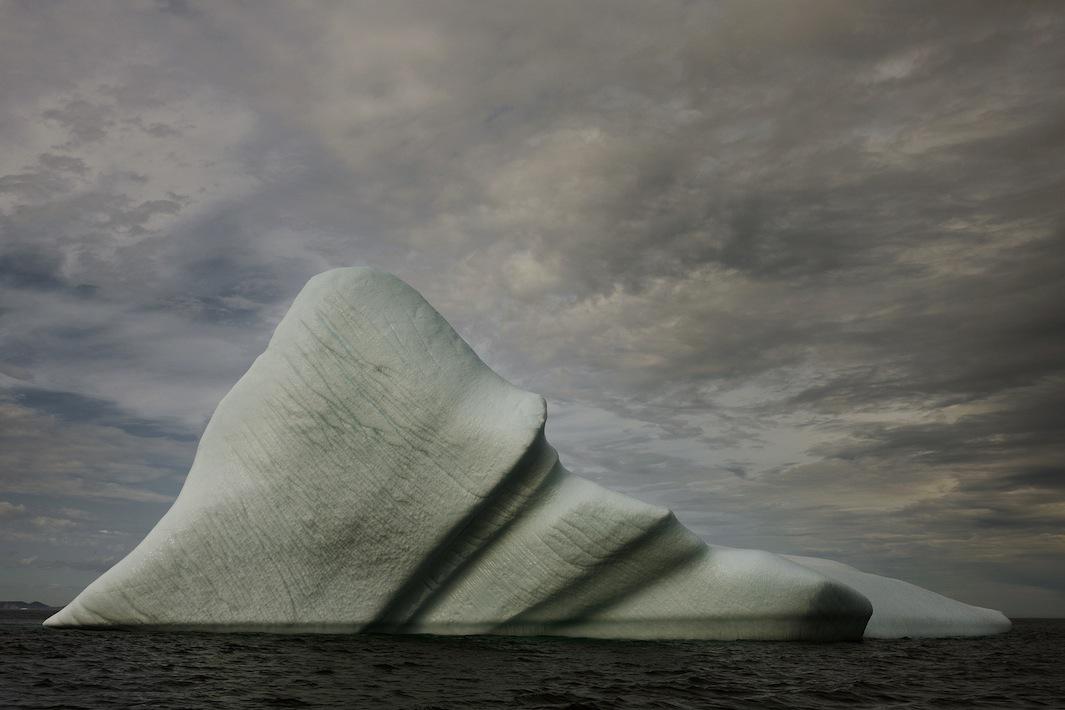
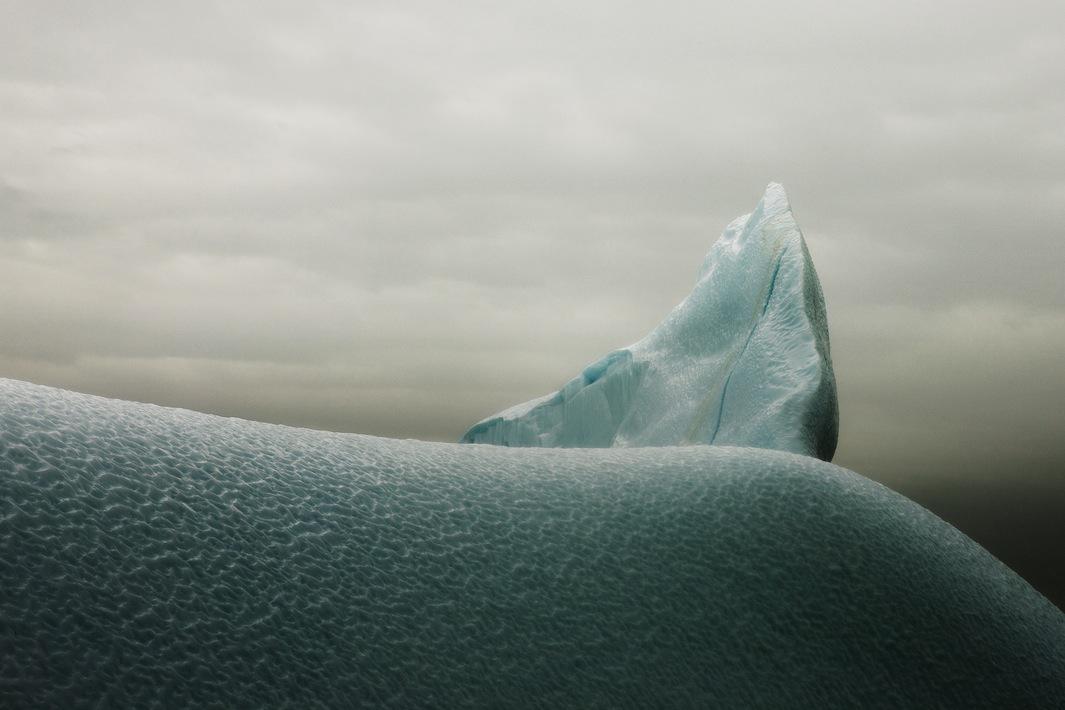
Perhaps inevitably, viewers are likely to read an environmental message in Harsent’s work, since diminishing glaciers are one of the hallmark signs of climate change. Although Harsent doesn’t mind that interpretation, he said his work is personal, not political. “I never really started this as an environmental project,” he said in an interview. “It’s great that it’s opened that conversation, but I never set out with that premise.”
Visually, Harsent took inspiration from the abstract paintings of Mark Rothko, particularly his division of color and his use of simple shapes and blocks. “I really wanted to treat the icebergs as structural objects and to focus on just three elements: the sea, the iceberg, and the sky,” he said. “I muted the colors slightly afterward as well. When you shoot stuff like this, you run the risk of getting away with it looking pretty. It would be easy to shoot that and end up with a lot of postcard stuff, stuff everyone gets.”
